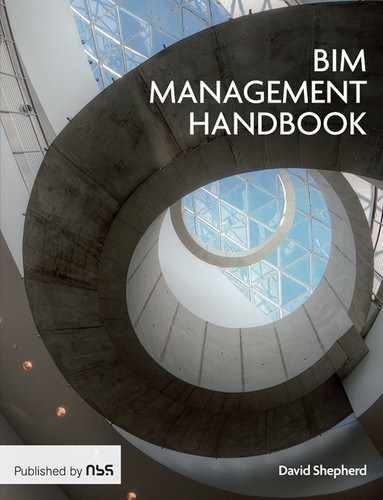Conclusion
In this handbook, I have sought, with the input of other contributors, to provide coherent and comprehensive guidance on the practical implications of managing BIM in readiness for the 2016 government mandate.
This book has drawn extensively upon official standards and other documentation produced by a host of industry experts and government advisory groups, including the BIM Task Group. The advice provided has ranged from the early reminder that BIM strategy should be aligned with client priorities to assessing the practical implications of a phased BIM Level 2 implementation.
This book is not meant to be prescriptive. Instead, the approach has been to provide a range of important issues to consider and corollaries for each organisation to apply.
It will be particularly important for each organisation to reflect on these issues and corollaries and to establish carefully their own consensus on the pace and extent of BIM adoption. This reflective self-paced approach will enable them to achieve not only the immediate improvements in design and coordination that are attributable to BIM, but also the long-term client benefits that are realised through comprehensive, spatially organised asset data.
Although the prospect and aspirations of BIM Level 3 may appear daunting to many, it represents the logical progression towards a built environment economy in which completely digital transactions predominate.
It is this transition to a built environment digital economy that heralds an era in which order of magnitude improvements over conventional project delivery and asset management processes will become commonplace.
